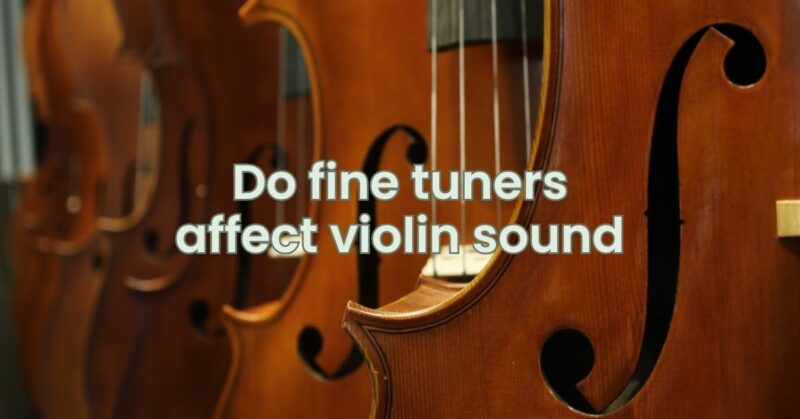The sound of a violin is a mesmerizing blend of beauty, emotion, and artistry. As violinists strive to achieve the perfect sound, every aspect of the instrument is carefully considered, including its accessories. One accessory that often sparks debate among violinists and luthiers is the fine tuner. Fine tuners are small mechanical devices mounted on the tailpiece of a violin, allowing for precise adjustments to the pitch of individual strings. In this article, we will explore the impact of fine tuners on the sound of a violin, dispel some common myths, and understand the nuances surrounding this controversial topic.
The Myths: Do Fine Tuners Dampen the Sound?
One common myth surrounding fine tuners is that they negatively affect the sound quality of a violin. Some believe that the added weight of fine tuners can dampen the vibrations of the tailpiece and reduce the instrument’s resonance. Additionally, there is a notion that the presence of fine tuners can create an “anchor effect,” restricting the freedom of movement in the tailpiece and hindering the violin’s ability to produce a rich and resonant sound.
The Truth: The Impact of Fine Tuners is Subtle
Contrary to popular belief, the impact of fine tuners on the sound of a violin is generally subtle and often imperceptible, especially to the untrained ear. While it is true that fine tuners add some weight to the tailpiece, the effect on the overall sound is usually minor. Many professional violinists use fine tuners without experiencing any significant degradation in sound quality.
Nuances: Quality of Fine Tuners and Tailpiece Design
It is important to consider the quality of the fine tuners and the design of the tailpiece when evaluating their impact on the violin’s sound. High-quality fine tuners made from lightweight materials can minimize any potential effect on the tailpiece’s vibration. Additionally, modern tailpiece designs are engineered to accommodate fine tuners while optimizing the instrument’s resonance.
Player Experience and Sensitivity
The perception of fine tuners’ impact on sound can vary depending on the player’s level of experience and sensitivity. Advanced violinists with a refined ear for sound may be more attuned to subtle differences in resonance and tonal qualities. For some, the psychological effect of using fine tuners may play a role in their perception of the instrument’s sound, leading them to prefer tailpieces without fine tuners.
Practical Considerations: Fine Tuners for Ease of Tuning
While the impact on sound may be subtle, fine tuners remain a practical solution for many violinists, especially beginners and intermediate players. Fine tuners make tuning the instrument more accessible and precise, allowing players to focus on learning and developing their technique without the added complexity of tuning with only the pegs.
Conclusion
The impact of fine tuners on the sound of a violin is a topic that sparks passionate discussions among violinists and luthiers. While there are some beliefs that fine tuners dampen the sound or hinder the violin’s resonance, the reality is that the impact is generally subtle and often unnoticed. High-quality fine tuners and modern tailpiece designs help minimize any potential effect on the instrument’s sound.
Ultimately, the decision to use fine tuners on a violin is a matter of personal preference and practicality. Some violinists, particularly advanced players, may choose to remove fine tuners in pursuit of achieving the purest tonal qualities of their instrument. However, many violinists, especially those at the beginning or intermediate levels, find fine tuners to be valuable tools that make tuning more accessible and accurate.
As musicians continue to seek the perfect sound on their violins, the debate over fine tuners will likely persist. Regardless of the presence of fine tuners, the soulful and captivating sound of the violin will continue to resonate through the hands and hearts of musicians, enchanting audiences with its timeless melodies.


